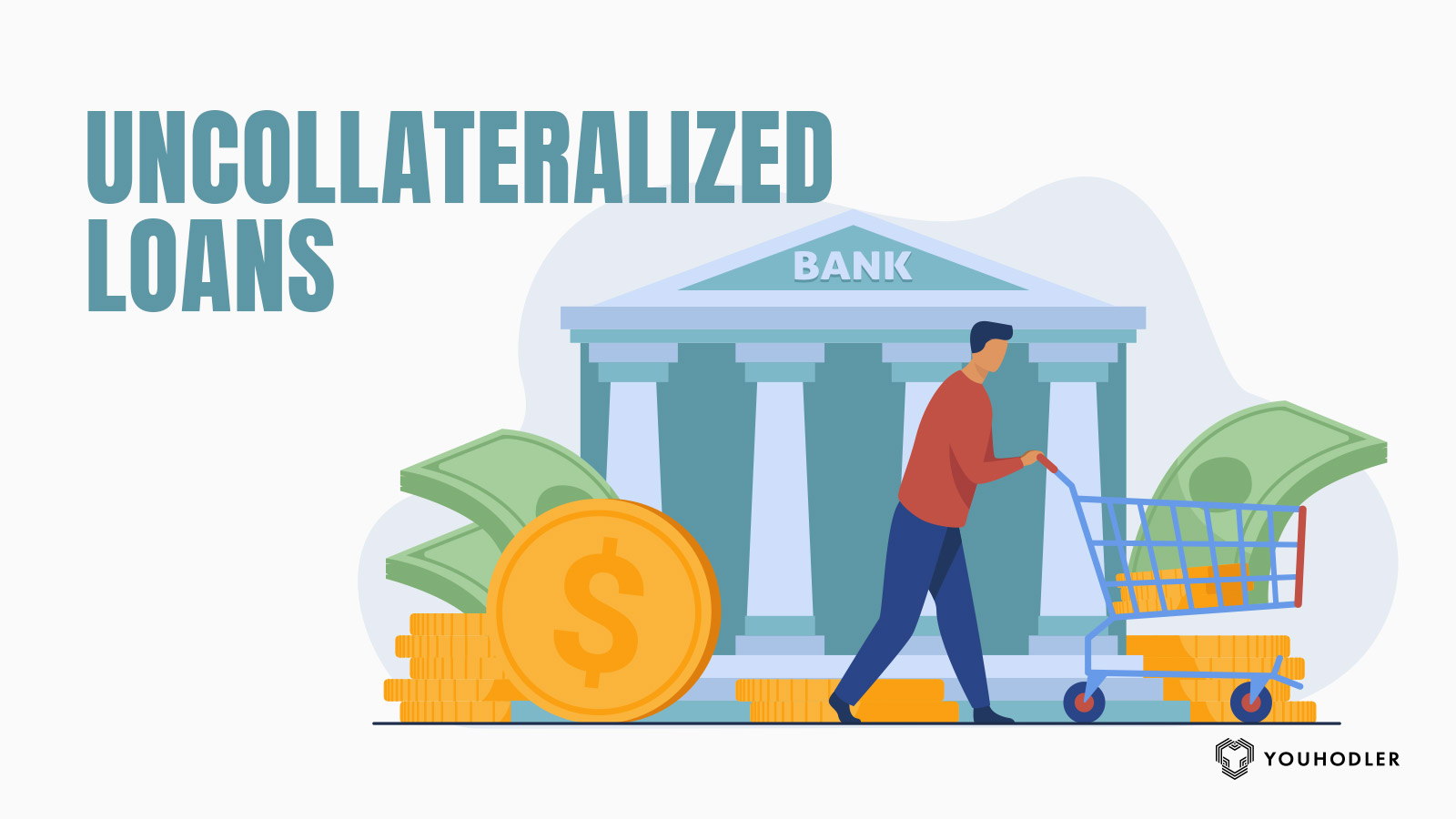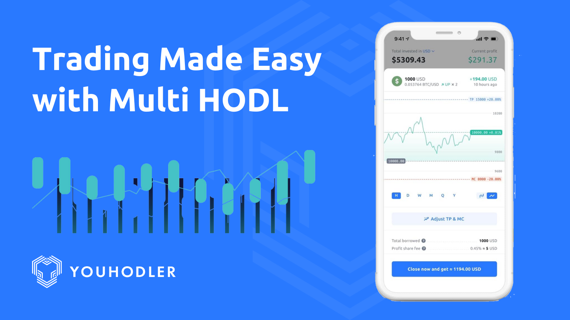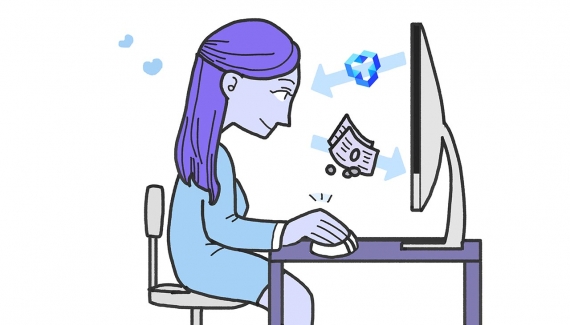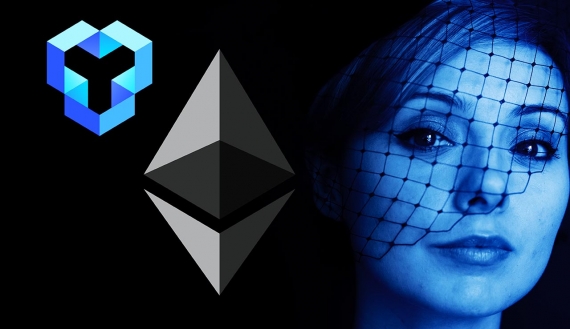
Uncollateralized Loans: Crypto Loans Without Collateral
The tradition of loans backed by crypto started in 2017. Here, borrowers could take out loans against Ether as collateral. Moreover, the loan used to be disbursed in stablecoins. At that time, the rule of thumb was to collateralize the total loan amount by 150% in Ether.
You might wonder why you want the value of your collateral to exceed the value of your loan? You could also back the loan by 100% worth of Ether tokens. In case of high volatility, the price of Ether might fluctuate so that the value of your collateral becomes worth less than the value of your loan. This is an under collateralization of your loan and will trigger a default.
To avoid a default, users had to add collateral of at least 150% of the loan value. However, a study by Defirate showed that the average collateralization for DeFi loans is 348%.
Suddenly in 2020, the crypto lending game changed drastically with the introduction of unsecured loans or uncollateralized loans. In other words, crypto loans without collateral made an entry in the DeFi space.
Projects such as Uniswap, bZx, or dYdX took over the frontpages with their flash loans. A form of crypto loans without collateral.
This article compares secured vs unsecured loans, introduces you to flash loans and flash loan attacks, and finishes with Aave’s zero collateral credit lines.
Loans: Secured Vs. Unsecured
Secured loans make it easier for the borrower to apply for large sums. Having collateral reduces the risk for the lender. Here, the lender knows that the borrower has some form of capital to cover the loan. At the same time, it motivates the borrower to repay their loan on time as they can lose their collateral.
In the case of an unsecured loan, the borrower often manages to take loans on an emergency basis. Borrowers, who often take unsecured loans, try to maintain a good credit history. However, even with an unblemished credit record, it’s too risky for the lender to lend large sums of money solely based on the face value of the borrower. Under unpredictable circumstances, such as the death of the borrower, or the borrower going bankrupt the lender loses all his money. On the other hand, lenders can make a lot of money from high interest rates by offering unsecured loans to borrowers.
So, how did the blockchain space implement unsecured loans?
Ethereum lending: Introducing Flash loans or Flash Swaps
Recently, projects such as bZx, Uniswap, and dYdX introduced flash loans, also dubbed flash swaps.
So, what do flash loans exactly do?
Flash loans make it a lot easier for the borrower to access crypto loans without collateral. At the same time, it keeps the lending risk-free. This might sound confusing, let’s try to understand how this works.
Anyone can take out a flash loan and doesn't have to provide any collateral. However, the catch is that you have to repay the loan within the same transaction. That’s very difficult as you have access to the lent money for only a couple of seconds before you have to repay the loan.
While taking out a flash loan, you can take advantage of arbitrage opportunities to make a quick profit. Up to now, this has proven to be the most lucrative usage of flash loans. For example, you take out $10,000 as a flash loan.
Next, you use this money to buy a particular token on one exchange and sell the same token on another exchange for a higher price. Assuming this is a fictitious example not taking into account trading fees, you make a quick profit of $500 using this arbitrage strategy. Now, you own $10,500 and repay the $10,000 loan. This means you can keep your $500 profit.
Recommended reading: How to Find the Best Crypto Arbitrage Opportunities?
But why is it called flash loans? These are called flash loans because you borrow and repay the loan in the same transaction. This whole process of taking out a loan, looping the borrowed money through different exchanges or protocols, and repaying the loan all happens within a matter of seconds.
On the flip side, flash loans allow for flash loan attacks...
The Flash Loan Attacks
The recent bZx flash loan attacks left everybody concerned about the security of flash loans.
In these attacks, borrowers took flash loans in ETH worth up to hundreds of thousands of dollars. Subsequently, these borrowers used a chain of vulnerable on-chain protocols to extract hundreds of thousands of dollars in stolen assets. They eventually repaid their loans and fled off.
The first attack amounted to $350,000 where the second one was more deadly, amounting to $600,000. You could argue that these attackers used the flash loan functionality as intended. However, the attackers managed to uncover some DeFi vulnerabilities and exploited them. You can read the detailed bZx story on the Coinbase blog.
Aave Lending: Zero Collateral Credit Line
Aave Lending is a DeFi exchange that has introduced a whole new paradigm of dealing with crypto loans without collateral. This paradigm originates from someone who has a significant volume of collateral deposited on Aave. This person can delegate their credit line to someone else who doesn’t have the required collaterals to borrow.
The person delegating their credit line to a third-party will make profits by earning a part of the interest paid by the borrower.
Aave equips the person lending their credit line to set up their terms through OpenLaw smart contracts which are legally enforceable. Next, the third-party must agree to these terms and conditions.
This means that the person who owns the collateral earns interest on the collateral while also gaining an extra profit from the newly created credit line.
Any form of credit inherently suffers from an element of risk: the risk of the borrower defaulting. To offset this risk, the person delegating their credit line should choose their parties well. They should delegate to only those borrowers who can be trusted and are transparent about their income, savings, and their track records of repaying debts on earlier occasions.
However, as an additional layer of safety, the Aave Protocol has introduced a Credit Default Swap, or CDS, that insures the person lending their credit line against a potential default.
Summary
The evolution of crypto loans started from over-collateralization and slowly transitioned into crypto loans without collateral. Flash loans introduced a new interesting concept to the lending space. However, flash loan attacks changed public opinion on this newly invented way of lending. People started questioning loan protocols and the security risks associated with flash loan attacks.
Furthermore, as many users add collateral to lending platforms but don’t use the collateral to take out a loan, Aave came up with a solution. Instead of sitting on a bunch of collateral, Aave created the ability to delegate credit lines to other users. This way, you can delegate your credit line to someone you trust and earn extra interest on your collateral. To make this possible, Aave integrated with OpenLaw to design legally-enforceable smart contracts that regulate credit lines.
If you are looking for a loan, YouHodler offers instant crypto loans with the highest loan to value ratio among all crypto lending platforms (90%). Furthermore, you can access fiat loans while using crypto as collateral. Take a look at the loan calculator to find out the best loan terms for your needs.







